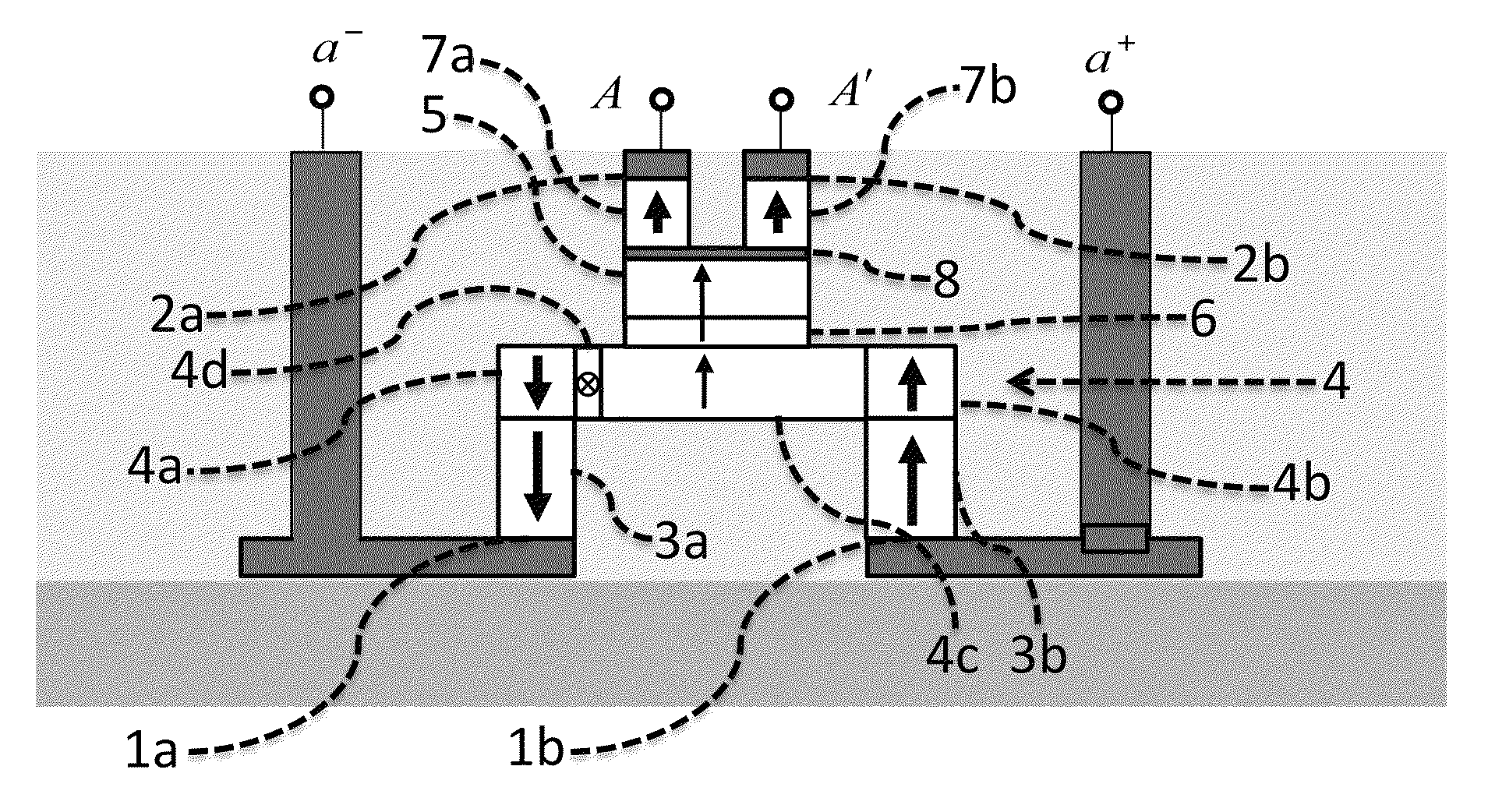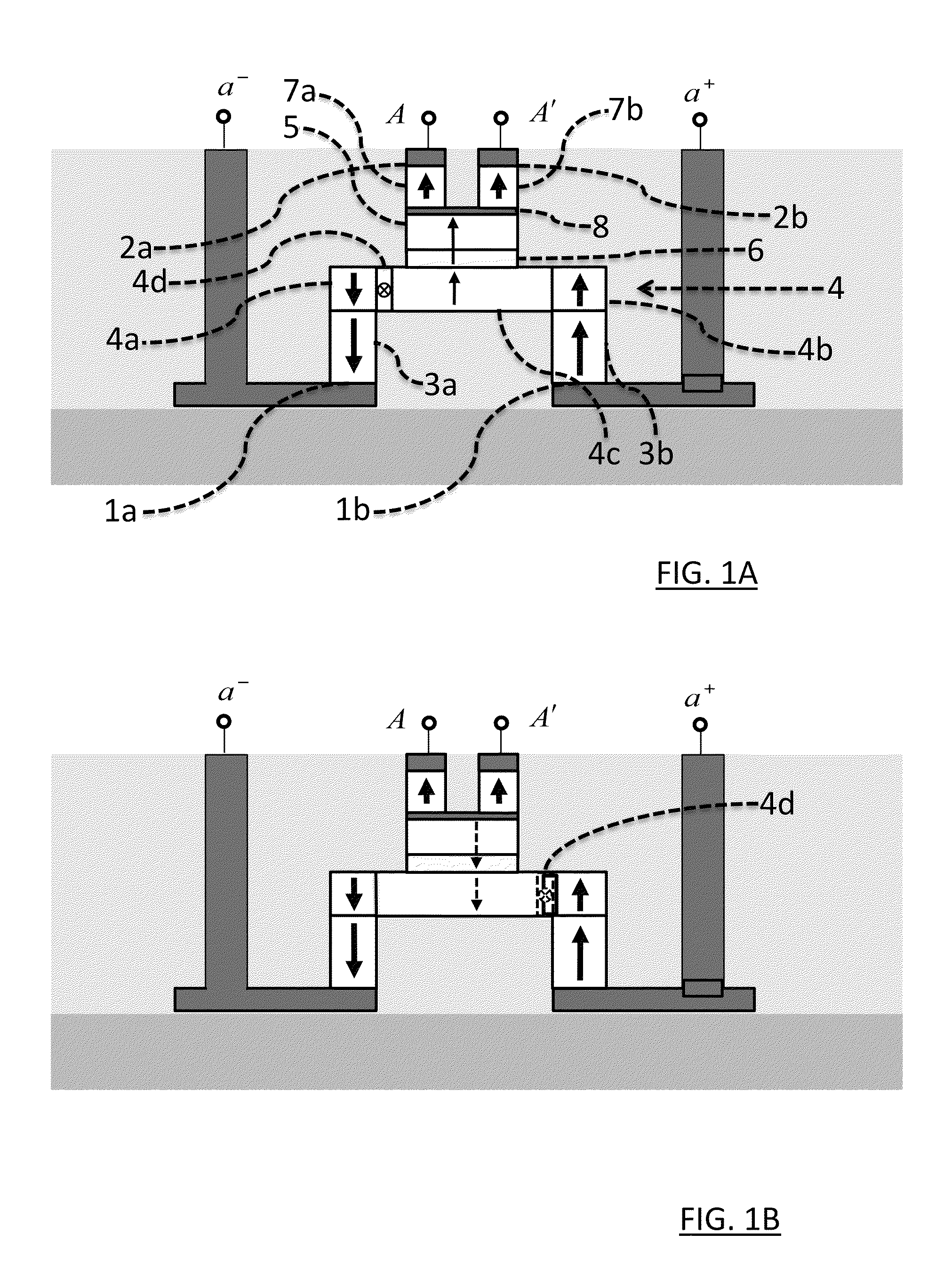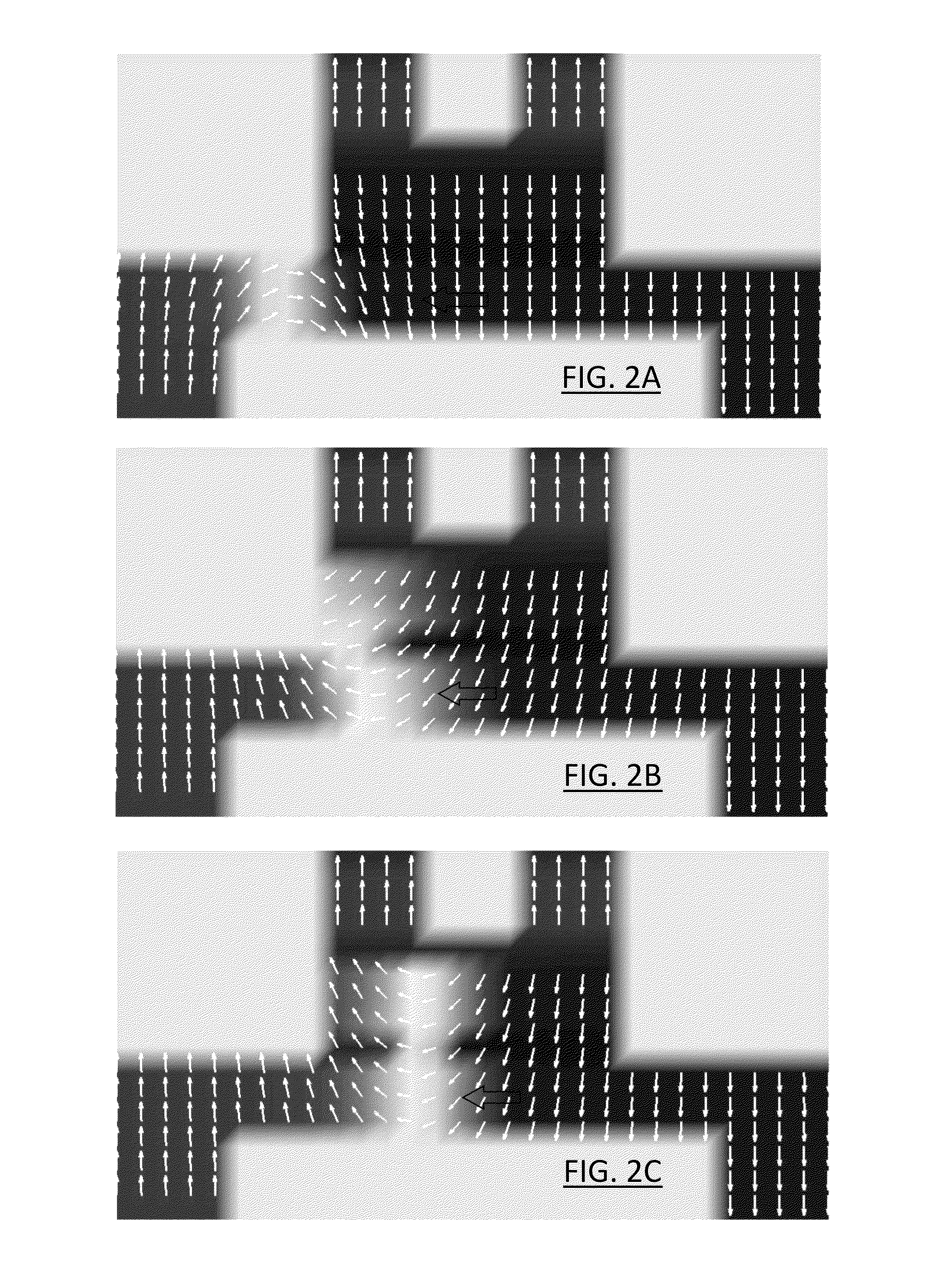Magnetic logic circuits and systems incorporating same
a logic circuit and magnetic logic technology, applied in the field of logic circuits, can solve the problems of inability to achieve the goal, prohibitive cost of full-custom design and manufacturing,
- Summary
- Abstract
- Description
- Claims
- Application Information
AI Technical Summary
Benefits of technology
Problems solved by technology
Method used
Image
Examples
Embodiment Construction
[0057]As previously noted, certain aspects of the instant invention relate to a new magnetic switching cell (mCell) that provides electrical isolation between the current paths used to program—vs. evaluate the state of—the device. Relevant structural and operational features of the inventive mCell are best appreciated with reference to FIGS. 1A-B, which respectively depict an illustrative mCell in its lower-resistance and higher-resistance states. The mCell is a 4-terminal device. As depicted, the mCell includes first and second programming terminals (1a and 1b) that are used to apply currents to switch the mCell between its lower- and higher-resistance states. The mCell also includes first and second evaluation terminals (2a and 2b) that present a first, lower resistance when the mCell is in its lower-resistance state, and a second, higher resistance when the mCell is in its higher-resistance state. [Based on current technology, the terminal-to-terminal resistance in the lower-resi...
PUM
 Login to View More
Login to View More Abstract
Description
Claims
Application Information
 Login to View More
Login to View More - R&D
- Intellectual Property
- Life Sciences
- Materials
- Tech Scout
- Unparalleled Data Quality
- Higher Quality Content
- 60% Fewer Hallucinations
Browse by: Latest US Patents, China's latest patents, Technical Efficacy Thesaurus, Application Domain, Technology Topic, Popular Technical Reports.
© 2025 PatSnap. All rights reserved.Legal|Privacy policy|Modern Slavery Act Transparency Statement|Sitemap|About US| Contact US: help@patsnap.com



